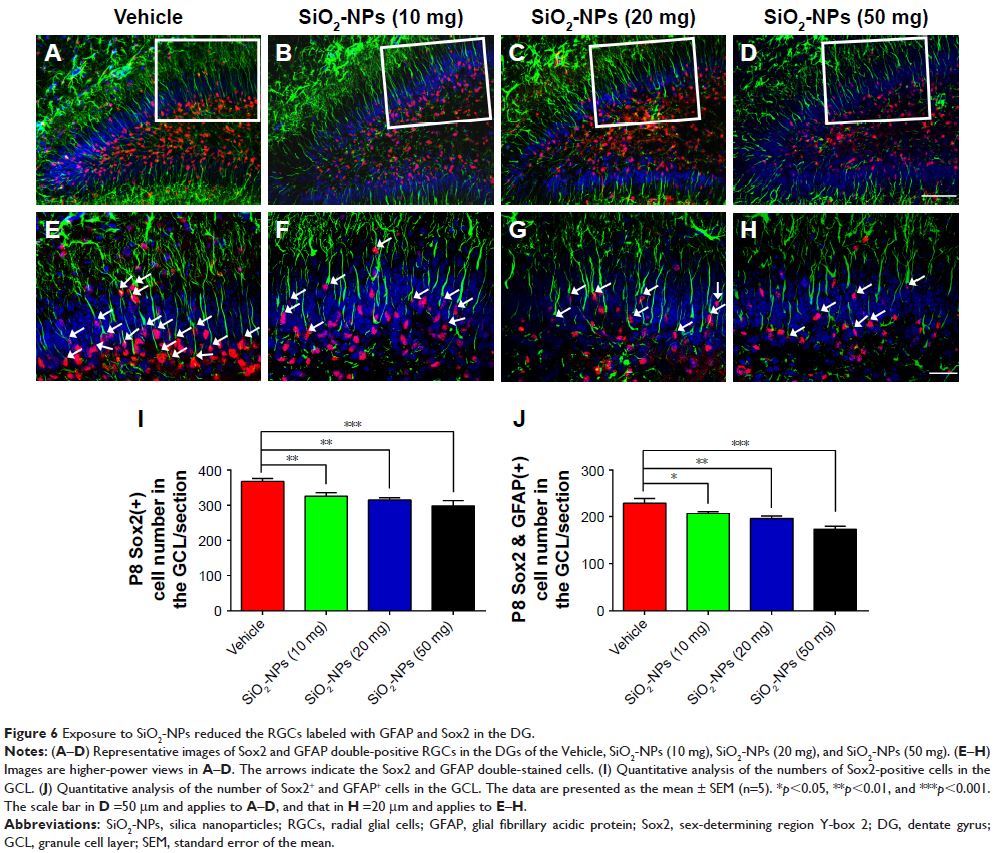108605
论文已发表
注册即可获取德孚的最新动态
IF 收录期刊
- 3.4 Breast Cancer (Dove Med Press)
- 3.2 Clin Epidemiol
- 2.6 Cancer Manag Res
- 2.9 Infect Drug Resist
- 3.7 Clin Interv Aging
- 5.1 Drug Des Dev Ther
- 3.1 Int J Chronic Obstr
- 6.6 Int J Nanomed
- 2.6 Int J Women's Health
- 2.9 Neuropsych Dis Treat
- 2.8 OncoTargets Ther
- 2.0 Patient Prefer Adher
- 2.2 Ther Clin Risk Manag
- 2.5 J Pain Res
- 3.0 Diabet Metab Synd Ob
- 3.2 Psychol Res Behav Ma
- 3.4 Nat Sci Sleep
- 1.8 Pharmgenomics Pers Med
- 2.0 Risk Manag Healthc Policy
- 4.1 J Inflamm Res
- 2.0 Int J Gen Med
- 3.4 J Hepatocell Carcinoma
- 3.0 J Asthma Allergy
- 2.2 Clin Cosmet Investig Dermatol
- 2.4 J Multidiscip Healthc

新生儿期间接触二氧化硅纳米颗粒会损害海马前体的增殖和长大后的社会行为
Authors Fu J, Gao J, Gong L, Ma Y, Xu H, Gu Z, Zhu J, Fan X
Received 25 December 2017
Accepted for publication 24 April 2018
Published 22 June 2018 Volume 2018:13 Pages 3593—3608
DOI https://doi.org/10.2147/IJN.S160828
Checked for plagiarism Yes
Review by Single-blind
Peer reviewers approved by Dr Mohankandhasamy Ramasamy
Peer reviewer comments 2
Editor who approved publication: Dr Linlin Sun
Introduction: Silica nanoparticles (SiO2-NPs) are currently among the most widely used nanomaterials, but their
potentially adverse effects on brain development remain unknown. The developing
brain is extremely sensitive to NP neurotoxicity during the early postnatal
period.
Materials and
methods: Herein, we investigated the
effects of SiO2-NPs (doses of 10, 20,
or 50 mg with a particle size of ~91 nm, equivalent to aerosol mass
concentrations 55.56, 111.11, and 277.78 mg/m3, respectively) exposure from postnatal day (P) 1 to P7 on hippocampal
precursor proliferation at P8 and long-term neurobehavior in adults.
Results: SiO2-NP exposure resulted
in inflammatory cell infiltration in lung tissue, microglia over-activation in
the hippocampal dentate gyrus (DG), and decreased hippocampal precursor
proliferation in the DG-subgranular zone at P8. Moreover, after exposure to 20
mg of SiO2-NPs, mice exhibited
social interaction deficits and slight anxiety-like behaviors in adulthood, but
this exposure did not induce locomotor activity impairment, depression-like
behavior, or short-term memory impairment.
Discussion: These findings suggest that early-age SiO2-NP exposure induced inflammation and inhibited precursor proliferation
in the DG in a dose-dependent manner, which might be related to the social
dysfunction observed in adulthood.
Keywords: silica nanoparticles, nanotoxicity, hippocampal neurogenesis,
neuroinflammation, social behaviour
